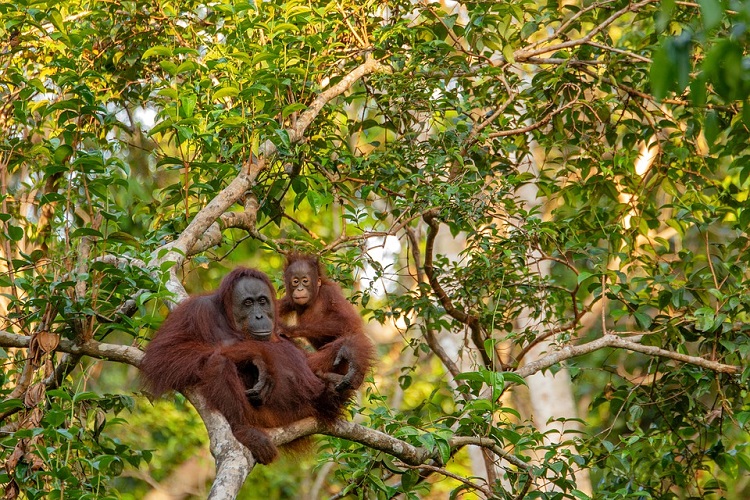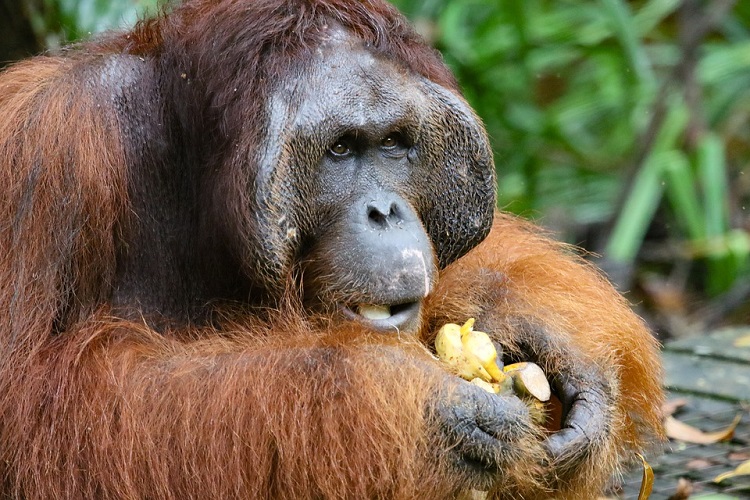A new study led by the University of Greenwich and the University of Kent shows that orangutans are still rapidly declining despite more than one billion US dollars invested in their conservation between 2000 and 2019. Orangutans face imminent extinction unless they are better protected. All three species of orangutan, which occur only in Indonesia and Malaysia, are classified as Critically Endangered – this is due to multiple threats from habitat loss, poaching and illegal trade. Researchers urge that orangutan conservation needs more strategic investment.
For the first time, a full cost and benefit analysis has been completed by scientists to evaluate exactly which conservation methods are working, and which are not.
Dr Truly Santika, lead author of the paper and a Senior Fellow in Biostatistics at the Natural Resources Institute at the University of Greenwich, said: "To our knowledge, no-one had ever fully analysed the costs and benefits of different conservation activities for the likelihood of survival of this protected species. This lack of analysis has reduced transparency, hindered the cost-effective deployment of resources, and hidden what works best in different contexts."
The study published in Current Biology involved a large network of orangutan conservationists and researchers who carried out a systematic evaluation of the change in orangutan populations between 2000–2019 and the environmental and social factors driving this change. They sourced data on orangutan conservation investments to assess how much was spent on forest protection and management, patrolling and law enforcement, rescue and rehabilitation, and other strategies. The researchers estimated how much each of these activities benefitted local orangutan populations compared to doing nothing at all.
What the study makes clear is that certain activities are more cost effective and better at saving orangutans than others. Over the last 20 years, habitat protection, patrolling, and community engagement strategies had the greatest return on investment for maintaining orangutan populations. Restoration of orangutan habitat through reforestation was especially expensive compared to forest protection and management. Rescue and release of previously captured orangutans had low cost effectiveness because it had little deterrent effect on illegal orangutan killing and trade, and it did not increase wild populations within current species ranges.
Dr Matthew Struebig, one of the contributing researchers and a Reader in Conservation Science at Kent’s Durrell Institute of Conservation and Ecology, said: "What is most important in this study is that it shows us that what we had been investing in might not be particularly good for orangutan survival. The study really shows us that if we want to save the orangutan from extinction, we need to invest in the basics of nature conservation, which is the protection of species habitats and working with local communities to reduce threats such as killing and capture."
 Similar analyses could be applied to many endangered species. Considering the urgent need to conserve the world’s biodiversity, it is important such cost-effectiveness analyses are developed to optimise the investment of limited conservation funding.
Similar analyses could be applied to many endangered species. Considering the urgent need to conserve the world’s biodiversity, it is important such cost-effectiveness analyses are developed to optimise the investment of limited conservation funding.
Julie Sherman, one of the contributing researchers, said: "Rehabilitation and release is an important tool to recover species that have few individuals left in the wild. If we act now, we can protect wild orangutans in their natural habitats, which is much more cost effective than trying to restore their populations once they have been killed, captured, or displaced from their homes."
Dr Truly Santika concludes: "Crucially, instead of trying to provide a generalised one-size-fits-all recommendation for the most effective conservation approach for orangutans, this project is developing a specific conservation action for each environmental and social context."
To find out more about:

